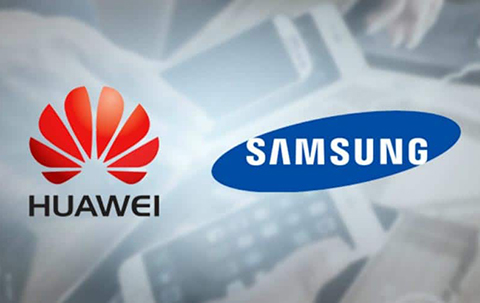
With the release of the latest data from Sino Research, China's panel industry has, for the first time, surpassed Korea in market share for mobile OLED screens. This is not just a numerical breakthrough, but a powerful testament to the rise of Chinese manufacturing in the high-tech sector.
The Rise of China's Panel Industry
In just seven years, China's panel industry has achieved a remarkable transformation from nonexistence to surpassing its competitors. This accomplishment reflects China's continuous investment in high-tech manufacturing and its spirit of innovation.
In 2017, China began mass-producing OLED screens for the first time, marking the country's official entry into the high-tech display technology sector. Subsequently, through relentless technological innovation and market expansion, Chinese panel companies rapidly grew, not only dominating the domestic market but also demonstrating formidable competitiveness in the international market.
Throughout this process, Chinese panel companies have continually optimized production processes, enhanced product performance, and reduced costs. These efforts have ultimately led to China's panel industry surpassing Korea in the global market.
Since BOE acquired Hyundai's 3.5-generation line in 2003, China's panel industry has steadily progressed in its competition with Korea. In the LCD panel market, it took China 15 years to surpass Korea. However, in the OLED sector, this timeline shortened to just seven years, demonstrating the accelerated development of China's high-tech manufacturing industry. Throughout this journey, Chinese panel companies have made breakthroughs in technology and showcased exceptional operational capabilities in market strategies and supply chain integration.
Chinese panel enterprises have forged a complete industrial chain by collaborating with companies across various domestic and international fields. From raw material supply to the manufacturing of end products, every segment strives for excellence. Additionally, these companies actively participate in the formulation of international standards, enhancing China's voice and influence in the global panel industry.
The rise of China's smartphone industry has provided robust support for the panel industry's development. Today, the market share of Chinese smartphone brands globally exceeds the combined share of Samsung and Apple. This not only offers a vast market space for the growth of China's panel industry but also accelerates the innovation and application of panel technology in China.
Chinese smartphone brands such as Huawei, Xiaomi, OPPO, and vivo have gained global recognition through continuous product innovation and market expansion. By making strides in design, performance, and user experience, these brands have set higher demands for panel technology. In response, Chinese panel companies have launched a series of high-performance, high-reliability OLED screen products to meet the high-end display technology needs of Chinese smartphone brands.
Furthermore, the close collaboration between Chinese smartphone brands and panel companies has driven the rapid iteration and optimization of panel technology, creating a positive industrial interaction.

Domestic market's vast potential
China's vast domestic market provides fertile ground for the development of the high-tech industry. Domestic consumers' support for local brands and preference for domestic components have fueled the rise of China's high-tech industry and highlighted the vast potential of the domestic market.
With the rapid growth of the Chinese economy and the increase in national income levels, domestic consumers' demand for high-quality, high-performance products is growing. Chinese panel companies, leveraging their local advantages, are better able to understand the needs of domestic consumers and offer products that better meet market demands. Simultaneously, the Chinese government has introduced a series of policies to support the development of the domestic high-tech industry, providing a favorable environment for panel companies.
The development of China's memory chip industry is equally remarkable. From its inception in 2016 to the mass production of the world's most advanced 232-layer NAND flash in 2022, China's memory chip industry has achieved significant accomplishments in a short time. However, the development of China's memory chip industry faces challenges due to U.S. technology restrictions.
These challenges have also spurred China to strengthen its commitment to independent research and development, ensuring security and autonomy in the high-tech field.

Chinese memory chip companies are gradually breaking through foreign technological barriers by increasing R&D investment, cultivating talent, and continuously improving their technological capabilities.
At the same time, these companies are actively expanding into international markets and establishing partnerships with enterprises in various countries and regions, thereby enhancing the global influence of Chinese memory chips.


